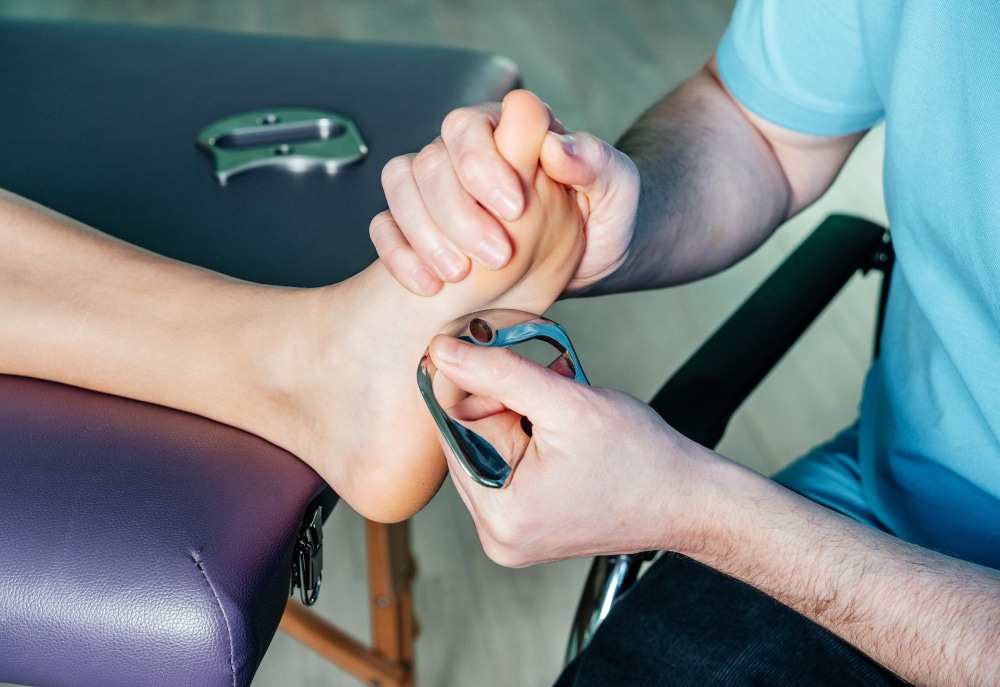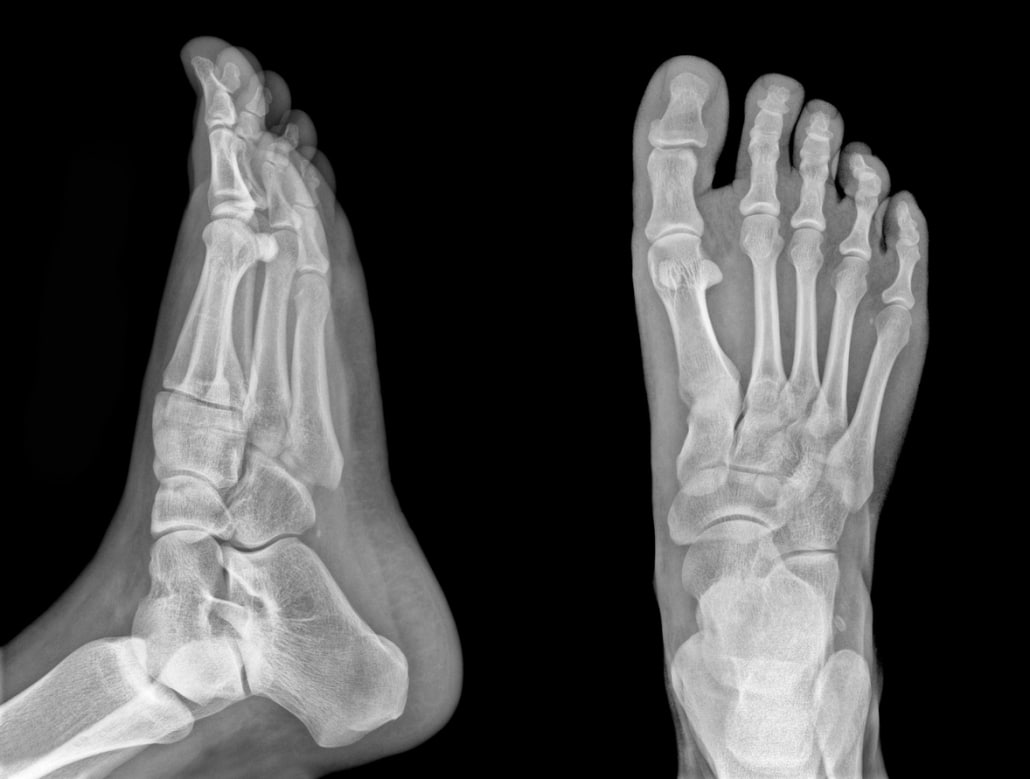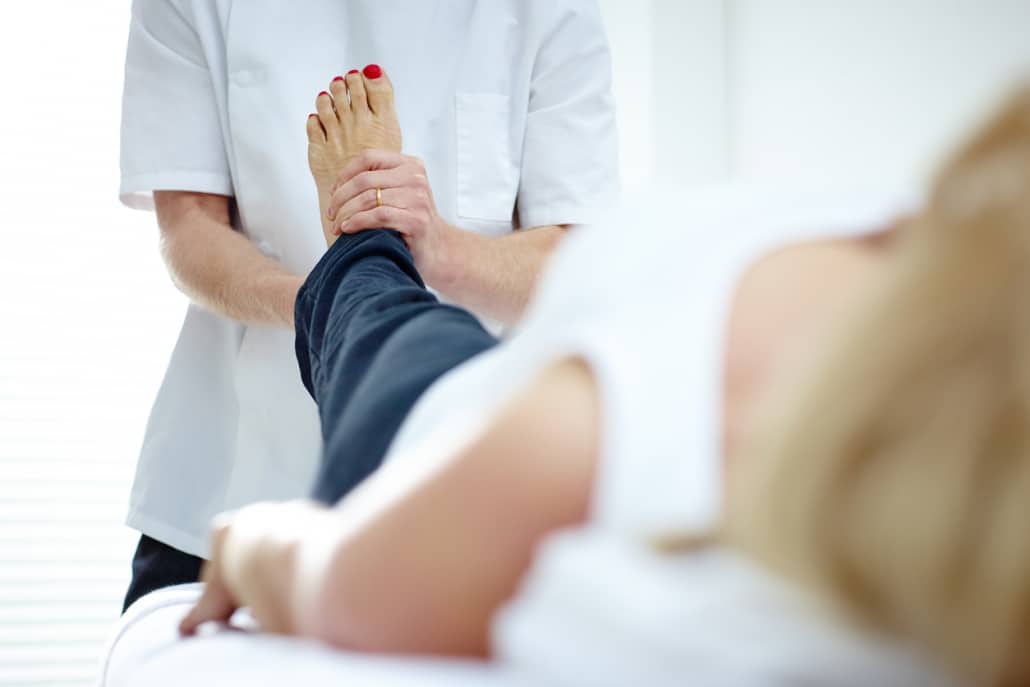Heel Pain Austin TX
The foot is one of the most complex parts of the entire human body’s skeletal system. Of the 26 bones your foot has, the heel bone is the biggest and potentially works the hardest. The bulk of your body weight impacts the heel with every step you take. Plus, the heel helps to propel your step when you take steps. Since this one point of your foot takes on so much impact, it can be the one part of the foot that is most likely to be injured or most likely to cause you pain.

Heel pain can interfere with your mobility, make it really uncomfortable to be up and about, and can sometimes be a sign of bigger problems. At the office of Dr. Jeffrey LaMour DPM, a podiatrist in Austin, TX, we offer extensive, thorough heel pain assessments to help you get a proper diagnosis and hopefully get out of pain.
Typical Conditions That Can Cause Heel Pain
Heel pain most often comes on gradually. You may start to feel pain that seems to radiate from behind the heel bone. You could feel pain from the backside of the heel that seems to run up the back of your leg. However, pain in the heel can sometimes also come on suddenly, especially if related to sudden trauma or injury. The variation between symptoms and how the pain shows up or progresses can depend on the underlying cause.
Heel pain is rarely as simple as it sounds. Underlying causes can be related to a list of conditions, such as:
- Plantar Fasciitis – Plantar fasciitis is considered to be one of the top causes of heel pain. The plantar fascia is a thick tendon that runs between the heel and toes. When this tendon gets overstressed (often due to either poor shoes or overactivity), it can become inflamed or even tear, which leads to a lot of heel pain.
- Achilles Tendinitis – The Achilles tendon connects the heel to your calf muscles to provide balance as you walk. If the tendon gets irritated, damaged, or inflamed, it can lead to Achilles tendonitis.
- Arthritis – Arthritis is inflammation of the joints, and it can affect the joints in the feet. Heel pain is commonly related to certain types of arthritis, such as psoriatic arthritis.
- Foot Fractures – All of the bones in your foot can sustain a fracture, including the heel. A fractured heel may occur with a blunt impact to the bone sustained during a fall or some similar incident. However, other fractured bones in the foot can also cause pain in the heel.
- Infection – Osteomyelitis is a type of bone infection that can lead to pain in the heel. Also, an infection in the body can lead to inflammation of the Achilles or plantar tendons that support the heel.
- Heel Spurs – Heel spurs are small, bony growths that can develop around the underside of the bone of the heel, which can make it extremely painful to walk.

Heel pain can also be related to neurological problems or even a tumor, even though these are rare diagnoses. The broad range of underlying causes makes it difficult for the average person to know what is causing their pain in many cases. Of course, pain can sometimes come from an injury or simply wearing shoes without enough heel support like flip-flops or flat sandals.
When to See a Doctor for Heel Pain
Any time you have heel pain for a prolonged period of time it is best to see a podiatrist for advice and a proper examination of the problem. However, there are some instances when heel pain should spur you to seek a medical assessment as quickly as possible, such as:
- You are dealing with heel pain even when you are not walking or standing
- You have pain in your heel and a fever
- You experience tingling sensations or numbness in your heel
- Your heel pain is so severe that you can’t walk normally, lift your toes, or bend your foot in a downward position
Any of these issues could point to a more severe problem with your heel, so getting treatment for heel pain in Austin, TX right away is important.
How Conditions That Cause Heel Pain May Be Diagnosed
In order to diagnose underlying conditions that may cause heel pain, the podiatrist will do a thorough examination to check for:
- How your range of motion is affected
- Where the pain is primarily located around your heel
- What you are doing when you feel the most pain

In some cases, the doctor may do an x-ray or MRI of the foot and heel to get a better look at what is going on beneath the skin, and around the tendons and bones. Problems like fractures in the heel bone or a torn tendon may be easier to see with radiographic images.
Common Routes of Treatment for Heel Pain
Naturally, the type of treatment recommended for helping heel pain is going to vary depending on what underlying issue is causing the problem. An injury, such as an injury to the Achilles tendon or a fracture would likely be treated with medications to reduce swelling and pain and prescribed rest. In some situations, prolonged problems with the heel related to certain conditions may require more intensive treatments. For example, Achilles tendonitis may be treated with extracorporeal shockwave therapy (ESWT), and a heel spur may require surgical removal.
A Note About Heel Pain and Regenerative Medicine
Regenerative medicine is aimed at regenerating damaged tissue instead of merely trying to treat the symptoms. For heel pain, there are several innovative forms of regenerative treatment that can be used for some patients.
Amniotic Fluid Injections
Amniotic fluid is naturally rich in stem cells, and stem cells can help support the regeneration of damaged tissues. For instance, if you have problems with plantar fasciitis due to damage to the tendon, injecting amniotic fluid near the site may help the tendon to naturally regenerate. In many cases, amniotic fluid injections prove to be effective even when other treatment methods have been unsuccessful.
Platelet Rich Plasma (PRP)
PRP has been used to treat several conditions in modern medicine, but it has also evolved as a way to potentially reduce certain types of pain in the heel and to improve the function of the heel. PRP therapy involves using a concentrated form of your own blood, which is rich in platelets, to aid in the healing process. During this form of therapy, your blood is taken, put through a scientific process to concentrate platelets, and the platelet-rich plasm is injected near the injury site.
Extracorporeal Shock Wave Treatment (ESWT)
Extracorporeal Shock Wave Treatment (ESWT) utilizes a type of sound energy to encourage the regenerative recovery of bones, connective tissues, muscles, and ligaments and to reduce pain and inflammation. During ESWT treatment, short, intense waves of energy are directed at the affected area from outside the body. For example, if you have microtears in your Achilles tendon that are causing a great deal of heel pain, the ESWT treatment may encourage the tendon to heal faster than it would under normal recovery conditions.
Visit a Podiatrist for Heel Pain Treatment in Austin, TX
Whatever the cause of your heel pain may be, it is better if the issue is not disregarded. A disregarded problem could mean you will be dealing with heel pain longer than necessary. And, in some cases, you could exacerbate a problem and cause more damage to your body. Reach out to us at the office of Jeffrey LaMour DPM to schedule an appointment about heel pain in Austin, TX.

Austin TX
8015 Shoal Creek Blvd Suite 119Austin, TX 78757
Phone: (512) 451-3668
Pflugerville TX
200 N Heatherwilde BlvdPflugerville, TX 78660
Phone: (512) 451-3668



